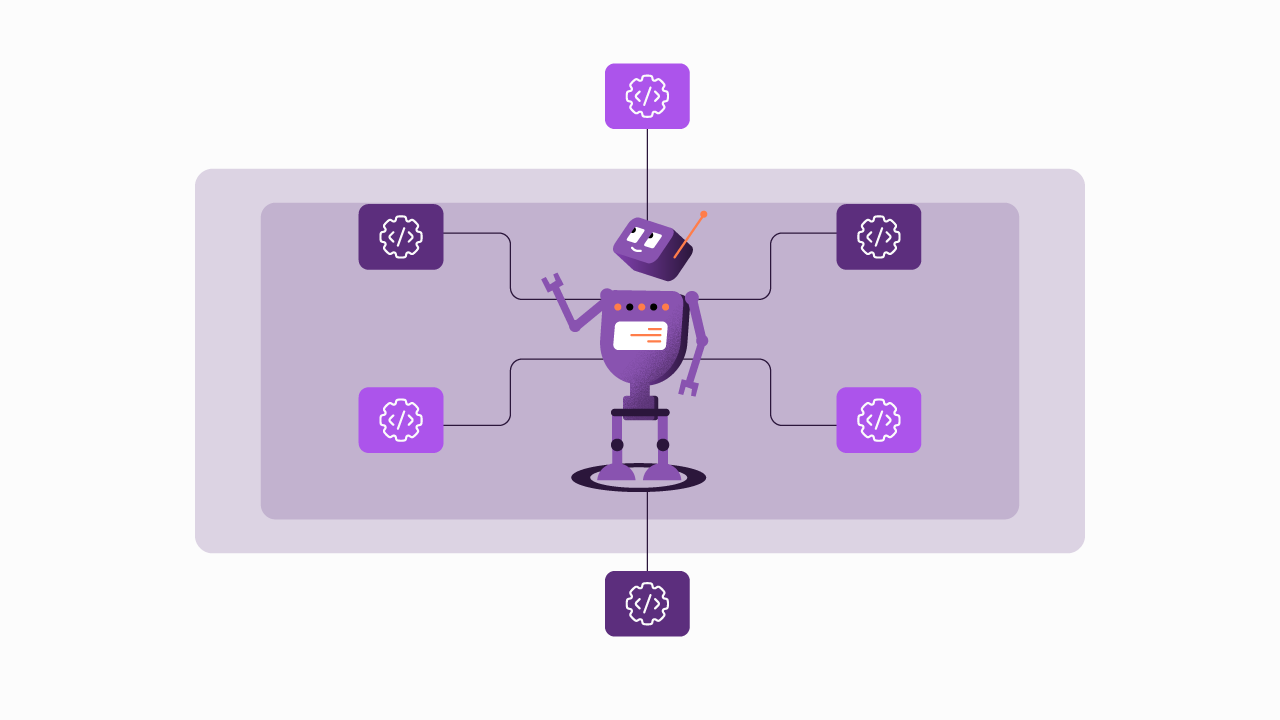API-First Strategy and Governance: Why It Must Be Considered
Enter the journey into the core of modern business innovation, where technology and strategy come together. Following a webinar by Gibson Nascimento on API Governance and Strategy, we find ourselves at a crucial meeting point of opportunity and need. Welcome to the world of API governance and API strategy, where today's decisions shape tomorrow's landscapes.
In the age of complex digital experiences, companies are facing new, difficult challenges, and to succeed, they need to become experts in this realm. Imagine a world where your business not only survives, but thrives despite the chaos of constant technology changes, shifting consumer expectations, and fast-paced global markets.
The key to this is knowing how to use APIs, the foundation of digital connectivity.
In the following paragraphs, we'll discuss why API Governance and strategy are essential, providing insights that go beyond industry jargon and appeal to a wide range of readers. As we navigate the complexities of this dynamic landscape, you'll learn how to not just adapt to change but thrive in it.
Ready to unlock your business's potential? Let's get started.
The Forces Driving Architectural Evolution
Multi-Experience: Navigating Diverse User Journeys
Imagine this: 30 years ago, talks about delivering experiences weren't prominent because of fewer products and services. Today things have changed, we're in a highly complex environment with many suppliers from many different places, covering almost every imaginable product or service available.
What caused this shift? Experience is now a crucial focus in business strategies, requiring specialized expertise to significantly improve product deliveries.
Think back to the early days when physical channels were the sole means of contact. Customers would walk to a store for a purchase or service. Then came the era of television sales, then came mobile transactions, and, more recently, the internet. However, the interoperability between these channels was virtually nonexistent.
Channels have now grown to blend into new, omnichannel experiences. APIs become the foundation, enabling smooth collaboration among various digital channels. This technological advancement brings many possibilities, but it also brings significant complexity.
Handling a complex network of digital channels, along with partner integrations through a range of APIs, creates a substantial increase in complexity.
Multi-Cloud and Hybrid-Cloud: Embracing Flexibility
As infrastructures evolve, their increased complexity poses a significant challenge for management. In the not-so-distant past, internal infrastructures featured multiple virtual machines that were relatively easy to control since they were part of the same system. However, the advent of cloud migration marked a pivotal shift, introducing a third-party infrastructure and amplifying the intricacy of management.
Enter the present landscape, where containerization emerges as a game-changer for IT teams, streamlining numerous obstacles. Yet, with every solution comes new complexities, especially concerning the mobility of deploying multi-cloud services.
The hybrid model, gaining momentum, presents a broader approach. In this scenario, services from diverse clouds seamlessly communicate with each other. Picture private cloud services intertwining with public cloud services—a strategy delivering cost advantages and bolstering the security and stability of services.
With these benefits, issues arise. One challenge is managing data traffic between clouds. Another is addressing vulnerabilities from data transfers between internal systems and third-party clouds.
This challenging situation highlights the difficulties faced by IT teams. Navigating the complexities of the cloud environment demands significant effort from companies, often burdening teams. It has become crucial to have experts who know a lot about APIs. They help ensure everything is working safely.
A Multi-Service Explosion: Navigating Specialization
Back in the old days, running a business was easier because you only had to focus on one thing. But now, things are different. With the advent of microservices, everything became complex. And, just when you think it couldn't get more complicated, adding service mesh architecture adds even more complexity.
We're in a challenging situation, difficult for companies to manage. Keeping track of all these microservices isn't just about being organized. It's also about problem-solving, innovating, and using APIs to offer new products.
There's a lot of complexity, and it shows us why it's crucial to carefully manage all these extra services. It's about ensuring all these services work well together to create new products that people want.
Why Is API Governance Important?
Understanding everything happening inside the business is crucial for its well-being. Imagine handling all those factors that bring a high level of complexity without the right tools, such as the API Governance tools. It's easy to see how this can burden your teams and lead to a situation where more effort is spent preventing problems than solving them. The costs are high, and there's a risk of things spiraling out of control.
Introducing API Governance, the anchor that organizes chaos. Now, let's look at three main governance models crucial for navigating the complexities of architectural evolution.
- Centralized Model: Imagine a team that serves as the epicenter, centralizing all reviews and approvals for any changes in architecture, be it new features or updates.
While this approach ensures a meticulous review process, it comes at a cost—the heavy reliance on the human factor for every revision.
- Decentralized Model: Similar to the centralized model, this approach allows for subdivisions to handle specific topics. While offering efficiency gains through minor revisions, it demands meticulous alignment among teams to maintain standardization in routines.
- Distributed Model: This model is like a symphony of specialized teams, each focusing on one product. Each team becomes an expert in its area, understanding the product details and improving how it's presented.
This decentralized method ensures an API Governance tailored to each product, making things more efficient and expertise-focused.
API Governance is like a compass guiding companies through architectural changes. It's not just about avoiding problems but creating a strong framework for teams to solve challenges precisely, reducing costs, and avoiding things getting out of control.
Pillars of API Governance
As we embark on the exploration of API Governance, let's illuminate the essential pillars that form the bedrock of a vigorous and practical framework.
Keep It Running:
- Imagine an orchestra performing in perfect harmony. This approach makes sure your APIs are not just operational, but performing at their peak. It includes managing version updates smoothly, making sure transitions are seamless, and ensuring each API is not just working, but also fine-tuned for maximum efficiency.
Managing Complexity:
- In the complex world of API environments, clear understanding is key. Make sure your team has all the information they need to fully grasp the APIs available.
Developers gain a clear view of their working environments, helping them navigate difficulties precisely and come up with innovative solutions.
Security and Compliance:
- Governing API security is the foundation of security, protecting access to your APIs and making sure that only the right people have access.
It's not just about access; it's about directing access to the right people in the right places. Clarity in user permissions and compliance measures fortify the security of your API ecosystem.
Value, Cost, and Business Aligning:
- APIs are more than just code; they are strategic assets that should bring real value to the business. This principle acts as a compass, making sure APIs line up with business goals. It's all about each API adding something important to the business plan.
Without this alignment, APIs risk becoming redundant—mere lines of code without a purpose.
Basically, these principles form the API governance framework that guides organizations in managing their APIs. It's not just about having APIs work; it's like directing a symphony where every API adds to the smooth running of business activities.
Adaptive Governance: Navigating Business Scenarios
As we venture into the realm of governance, let's unravel the concept of Adaptive Governance—a dynamic framework that thrives on flexibility, ensuring agility and alignment with specific operational contexts.
Control-based Models:
- In scenarios where control is paramount, such as the intricate operations of banks and financial institutions handling sensitive customer data, Adaptive Governance incorporating Regulatory Compliance ensures the implementation of complex routines and stringent standards.
This approach guarantees robust operational integrity, safeguarding against potential risks and ensuring compliance with industry regulations while securing core banking data.
Agility-based Models:
- For models driven by agility, each team assumes control over its APIs, fostering a decentralized yet purposeful approach.
Adaptive Governance facilitates agile architecture, creating a landscape where teams have the clarity of purpose and the autonomy to navigate their APIs, ensuring swift responsiveness to evolving business needs.
Autonomy-based Models:
- At the top of adaptability is the autonomy-based model. It focuses on automating governance processes, ensuring only APIs meeting strict requirements are released. This makes operations smoother, reducing manual work and improving the accuracy of deployment processes.
Applying these Adaptive Governance models to each company's unique situations brings clear benefits. Cost reduction and reduced time to market become real as teams are freed from manual tasks, focusing on more strategic activities. Equally important is reducing risks and strengthening compliance measures.
Automated and standardized routines not only improve deployment quality but also create a strong control system, keeping operations in check.
Why choose Sensedia Adaptive Governance?
Adaptive Governance is the new module of the Sensedia API Management Platform. This revolutionary addition boasts a low-code interface and advanced features tailored for Adaptive API Governance, including:
Advanced API Catalog:
- Elevate your API management with a comprehensive catalog featuring attributes and detailed search functionality.
Graphical Dependency Display:
- Visualize dependencies and conduct impact analyses through an intuitive graphical interface, ensuring a clear understanding of your API landscape.
Requirements and Model Definition:
- Streamline the publication of APIs by defining requirements and models seamlessly within the platform.
Automatic Policy Enforcement:
- Automate the enforcement of policies and create workflows to enhance operational efficiency.
API Interface Completeness Score:
- Gauge the completeness of your API interfaces through a dynamic scoring mechanism.
Configurable Alerts:
- Stay ahead of potential issues with configurable and preventive alerts, providing proactive governance.
Timeline of Changes (Audit):
- Maintain transparency and accountability with a detailed timeline showcasing changes facilitating audit trails.
These features seamlessly integrate with the existing API governance capabilities native to the Sensedia API Management Platform, including:
Customizable Dashboards:
- Real-time API monitoring dashboards offer a blend of technical and business metrics for a holistic view of API performance.
Access Plans and Security Resources:
- Configure access plans and implement security resources to fortify your partner ecosystem.
Logging & Tracing:
- Achieve complete transparency with detailed logging and tracing of payloads and additional data.
Team, Role, and Permission Management:
- Efficiently organize your teams, define roles, assign permissions, and manage environments seamlessly.
Versioning and Deployment Control:
- Exercise control over API versions and deployments, with automatic documentation creation and updates.
Developer Portal:
- Empower developers with a user-friendly portal for publishing, organizing, and collaborating on APIs.
In addition to the Sensedia Adaptive Governance module, Sensedia’s consulting team has developed an API Governance playbook to support its clients in setting up an API Governance Team and defining governance models, policies, standards, security mechanisms, KPIs, impact analysis, API prioritization, workflow configuration, and more.
Sensedia's groundbreaking Adaptive Governance module, complemented by a dedicated consulting team and an extensive playbook, stands as a business transformation solution. This holistic approach ensures not only the seamless operation of APIs but also strategic alignment, risk mitigation, and compliance.
As businesses navigate the ever-changing landscape, embracing Adaptive Governance becomes the key to not only surviving but thriving in the realm of digital transformation.
Begin your API journey with Sensedia
Hop on our kombi bus and let us guide you on an exciting journey to unleash the full power of APIs and modern integrations.
Related content
Check out the content produced by our team.
Embrace an architecture that is agile, scalable, and integrated
Accelerate the delivery of your digital initiatives through less complex and more efficient APIs, microservices, and Integrations that drive your business forward.





.svg)


.webp)

.png)

